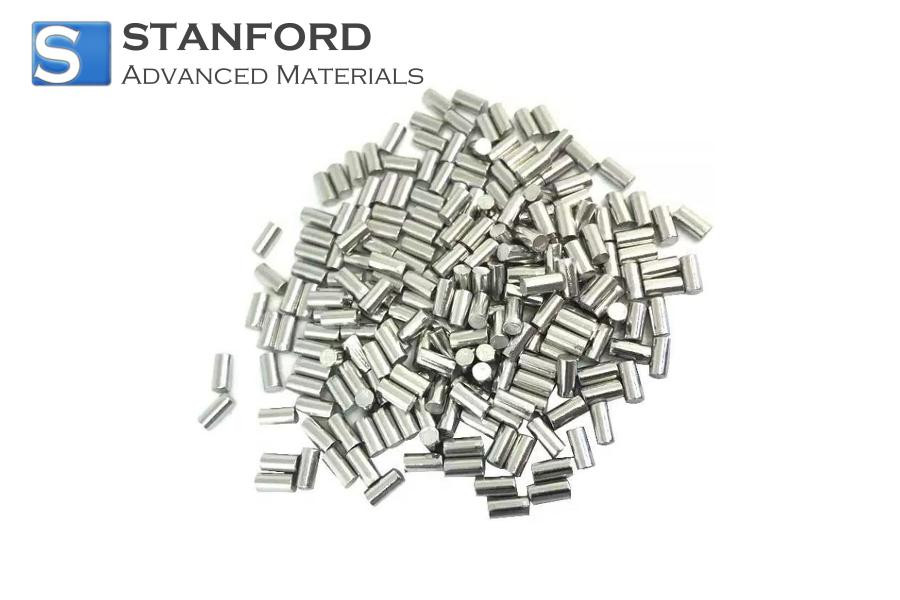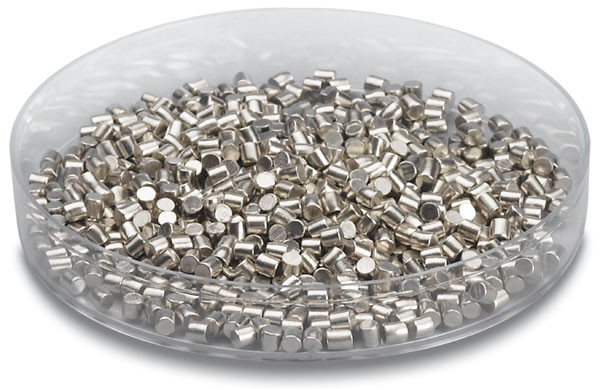Different Types of Evaporation Materials
(주)연진에스텍은 Granule, Beads & Sphere, Lump, Rod, Powder, Single Crystal 등 대부분의 Evaporation Process에 부합하는 다양한 형태의 증발 증착물질을 제공합니다.
Platinum (Pt) Evaporation Materials
Description:
Platinum (Pt) Evaporation Materials are crucial for thin film deposition, renowned for their exceptional properties. With high purity and controlled evaporation rates, they ensure precise film deposition onto substrates, fostering uniform and defect-free film formation. These materials exhibit remarkable thermal stability, enduring high temperatures during deposition without degradation. They possess superior adhesion to various substrates, ensuring the durability and integrity of deposited films. Widely utilized in semiconductor devices, catalysis, and sensor applications, Platinum Evaporation Materials significantly contribute to advancements in thin film technology. Versatile and reliable, they play a crucial role in industries requiring precise film fabrication, offering consistent performance and enabling technological innovations.
Specification of SAM Platinum Evaporation Materials:
|
Material |
Platinum |
|
Appearance |
Metallic Gray |
|
Melting Point (°C) |
1,772 |
|
Thermal Conductivity |
72 W/m.K |
|
Coefficient of Thermal Expansion |
8.8 x 10-6/K |
|
Theoretical Density (g/cc) |
21.45 |
Platinum (Pt) Evaporation Materials Application:
1. Semiconductor devices: Used as materials for metallization layers, electrodes and connecting wires, e.g., in integrated circuits and sensors.
2. Catalysts: used as components of catalysts to facilitate chemical reactions, e.g., applications in automotive exhaust treatment, fuel cells and chemical synthesis.
3. Sensors: for the preparation of highly sensitive sensors, e.g., in gas sensors, biosensors and chemical sensors.
4. Medical devices: for the preparation of medical electrodes, implants and biosensors, e.g., for applications in pacemakers, nerve electrodes and biomedical imaging.
5. Optical coatings: for the preparation of high reflectivity optical lenses and mirrors, e.g., for applications in lasers, infrared sensors and optical communication devices.
- High Purity & Performance 일관된 증착 품질과 오염을 줄이도록 가공합니다.
- Material Variety 다양한 응용 분야의 요구 사항에 맞게 순수 금속, 합금, 세라믹 및 화합물로 제공됩니다.
- Custom Manufacturing 특정 시스템의 필요요구 사항에 맞게 크기와 형태, 조성을 맞춤화했습니다.
- Precision Design 반복 가능하고 균일한 박막 결과를 위해 엄격한 공차로 제조되었습니다.
- Flexible Supply Chain 최고의 제조업체와 강력한 파트너십을 통해 일관된 품질과 on-time 납품을 보장합니다.
하기


